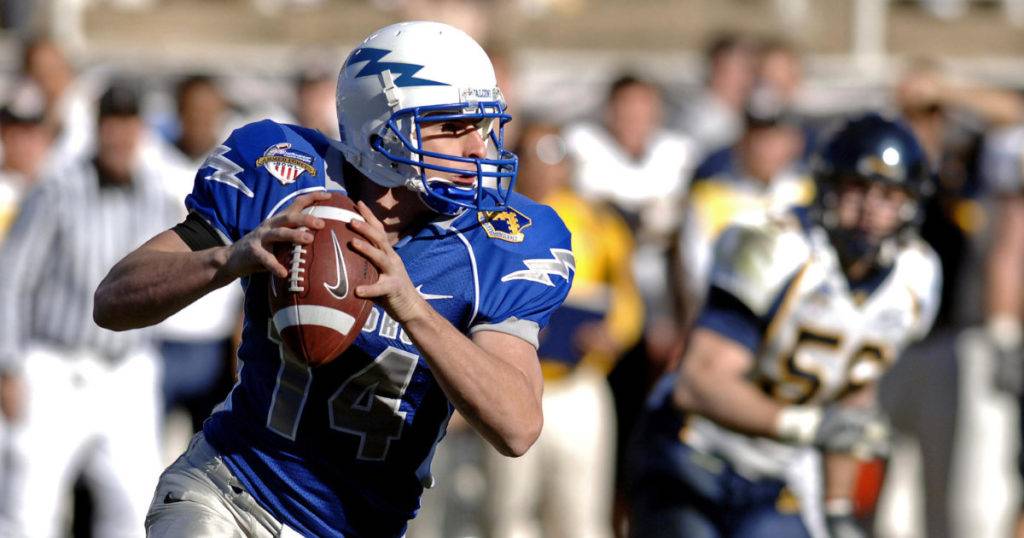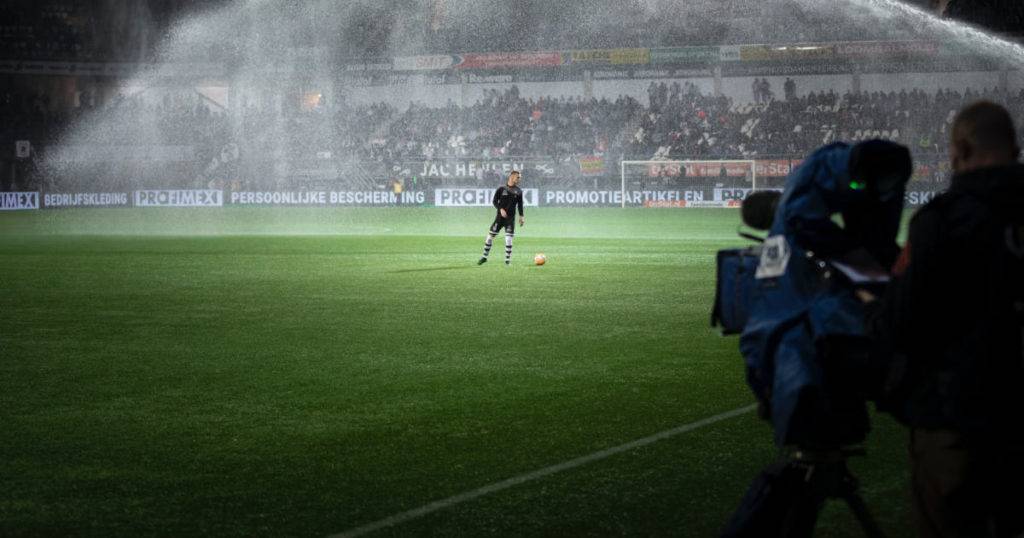Social Media Continues to Fuel Fans Sports Business Journal
- 51% of fans getting sports content on Facebook
- 46% on YouTube
- 31% on Instagram
- 25% on Twitter
- Real Madrid has 114 million followers on Instagram.
- The NBA has 66.3 million followers.
- Ronaldo, the most followed person, has 431 million followers.
The takeaway?
Social media is simply taking over sports! It's time for all sports organizations that aren't yet taking advantage of the digital platform boom to get on board.
Let's explore a few different trends we're seeing for social media in sports, highlighting a few ways this two-way communication has influenced the sports world already.

Media in general has been transforming the dynamics of many industries for decades. And the sports industry is no exception – first live broadcast TV, then cable, then OTT subscription, and now social media. The rise of social has been especially rapid over the two years of Covid isolation.
At its core, it's easy to understand. Broadcast TV is a one-way push of information. Social media is a two-way conversation that enables sports fans to engage, react and feel more connected to the teams and athletes they love.
Consider sports fans' current social media use patterns:
- 41% of global sports fans stream live sports through digital platforms.
- 32% of sports fans — and more specifically, 43% of Gen Z fans — use social media platforms while watching live sports.
These statistics and more like these prove one thing: The effect of social media on sports and fans is massive — and accelerating every day.
Increasingly, social media is becoming deeply woven into today's sports culture. With more people spending more time online, fans take to social media to engage in sports-related topics and content. Also, organizations are building creative ways to promote their sports teams and encourage sports conversation.
From live-filming games to sharing memes and trash-talking, people no longer just watch sports. They actively engage with them.
A few key social media effects on sports include:
1. Sports Marketing
The new generation of sports marketers know that the combination of sports and social media are the key to providing an 'always on' experience for fans.
Social media has simplified sports marketing. Many sports marketers leverage social channels to promote sports-related events and activities. And many organizations are getting fans involved in creating original user-generated content (UGC) to build deeper connections.
See a few sports marketing examples to understand better how social media can help organizations and brands alike.
2. The Source of Truth, Stats and Information
Social media accounts for athletes and sports organizations have become essential destinations for fans. This is especially true for younger fans just forming their lifelong alliances and loyalties.
58% of 16- to 24-year-olds and 49% of 25- to 34-year-olds report following athletes on social media; 43% in each age group follow leagues on social.
Also, almost every sports team has multiple social channels on which they share relevant news with fans. That's a smart move because fans are now using social for sports news and updates more than ever. Nielsen reports that between April 2020 and August 2021, global usage of TikTok for sports news and content grew 30%; the same use case for Twitch grew 21%.
Social media has made it easy to share sports news and content as a medium for two-way conversations that reduce marketing costs for organizations.
And for sports fans, social media is a means to stay updated with sports content, follow their favorite athletes or teams, and interact with other sports audiences.
Overall, sports are increasing in popularity. One of the reasons is the rise of social media.
3. Sports Leagues' Global Reach
Social media enables sports leagues to have direct and real-time access to fans worldwide. This connection allows international fans to connect with their favorite teams no matter where they live.
And teams reap the benefits of accessing a larger fan base. For example, while Americans love basketball, the NBA actually has more fans in the U.K., Germany, and China than in the U.S.!
4. Live Streaming
TV was the only way to broadcast live sports or events visually for many decades. Now, sports organizations and media outlets can leverage social media on mobile screens to share live events and real-time games with audiences.
According to a 2020 study, 39% of American adults watch sports via online live streams. Consumers ages 18-24 are over 2x more likely to live-stream sports than fans ages 55+.
Sports fans now watch (and often prefer to watch) their favorite team playing right from their mobile devices.
5. Social Media's Increased Revenue Opportunities
Broadcasters are realizing the benefits of providing updates and streaming content that viewers want to see on social. They're using digital media from their league partners to attract and retain audiences. As a result, digital media rights are becoming critical components to broadcast rights deals, generating more revenue for leagues everywhere.
This same digital media and social media buzz around players and teams can boost ticket sales and merch sales. This happens through increased engagement, especially when sponsorship comes into play.

How Social Media Impacts Sports Organizations
Another notable effect of social media is the avenue for sports organizations to share information with fans directly and make them feel a part of the league experience. Most people's time spent online involves scrolling to find something that interests them.
However, being active on social is a great way for sports organizations to build relationships with the public.
Many sports teams have social media accounts to promote events or activities and engage people with sports content. These organizations use social media platforms to announce upcoming games, share lineups for a new game, or even highlight a player's performance.
Social media also helps people stay connected with their favorite sports teams and athletes. For example, during the early days of the COVID-19 pandemic, many competitions were suspended. But social media allowed organizations to create fresh content, keep fans updated about their favorite players and coaches, and engage their audiences.
For instance, during the NBA's stoppage, they released photo and video content celebrating memorable moments from player and team histories. This powerful fan engagement content reached 1.6 billion followers!
In addition to being a news medium, social media helps organizations boost fan engagement and partner revenue opportunities. This happens through targeted social media sports marketing campaigns using digital content.
And using tools like Greenfly's digital media management software, sports teams like Paris Saint-Germain have massively grown their audiences through athlete advocacy on social media.
In summary, social media helps sports organizations:
- Keep fans updated on team news like new signings, contracts, announcements and events
- Foster fan engagement with original content from leagues, teams, coaches, and players
- Promote events or teams
- Create and share live sports content like live video, real-time games, play-by-play updates, goal announcements, etc.
- Gather feedback from fans through tools like Twitter and Instagram polls and authentic UGC from them, too
- Build new revenue from partners and fans through the digital media captured every day

How Social Media Impacts Revenue
At the moment, TV broadcast revenue, sponsorships and ticket sales make up most of any team or league revenue. Social media provides a new opportunity to expand and grow revenue from those same channels. It also opens up new opportunities.
Sports properties can leverage their digital media feeds — short-form images and photos created for social media — and turn that inventory into an asset. For sponsors, fans, and alumni associations, that content is valuable in so many ways. There's so much to explore here that we wrote a whole playbook on the topic:

Boost Revenue From Social Media
Here's our free 3-step plan and insights for activating players as social marketers — with the digital media you capture every day.
How Social Media Impacts Athletes
Getting your favorite athlete's attention was almost impossible just a decade or two ago. Social media has almost single-handedly bridged the gap between sports fans and athletes. Many professional athletes have personal social media accounts where they engage fans, promote sponsors, and share their events and lives.
Aside from engaging fans, social media plays a massive role in exposing the human side of athletes. Many athletes share personal social media content like behind the scenes or day-to-day activities. For athletes who are often considered heroic in their performance, social media humanizes them — making them more relatable.
Sharing their stories also helps athletes build their personal brands. This capability strengthens their opportunities and increases their value for endorsement deals and other career gains.
Another benefit for athletes: Social media makes it easy to stand for a cause and amplify social issues. For example, Jah'kiyla Atwaters started a social media campaign to raise donations for children who couldn't afford the costs of participating in sports.
With the right social media strategy, athletes can:
- Enhance their public image
- Build a community of loyal audiences and
- Position themselves for future opportunities and earnings.

Social Media in Sports: Summary and FAQ
We've reviewed how social media is changing the sports world and influencing leagues, teams and players. Here's a quick summary of the most important frequently asked questions about social media in sports.
Why is social media important in sports?
Social media is an essential tool for building two-way communication with global fans (especially Gen Z and other digital-first generations), deeply engaging sports audiences, and sharing sports-related information. This capability is vital in an age where many people, including sports fans, spend a lot of time and money online. Undoubtedly, social media is changing the way fans watch sports events. It's also steering how organizations and athletes engage with sports audiences, and how they expand revenue opportunities with both fans and partners.
How has social media changed sports media?
Social media have influenced sports, particularly in marketing and communications. Many sports marketers now capitalize on social media to promote campaigns, events, teams and sports activities. Also, social media is changing traditional journalism: Sports media outlets now share content with mass audiences via social media platforms daily.
How does social media affect athletes?
With social media, athletes are no longer just athletes but also commercial brands. Athletes benefit from having social media to promote themselves, build a personal brand profile, and connect with their fans year round. Moreover, athletes can enjoy job opportunities and economic benefits based on their reputation on social media.
How does the media influence sport?
Media is a huge part of the sports experience. It helps raise awareness of sports, showcase the values of sports, and offers an avenue for sports events to be shared across the world. Sports organizations, media outlets, fans and athletes embrace social media as a tool to communicate. This is a big win for the sports industry because it has allowed sports to become truly ingrained in people's lives.
If you're exploring ways social media can help you reach your sports marketing goals, get in touch with our team of experts.
Source: https://www.greenfly.com/blog/social-media-in-sports/
0 Response to "Social Media Continues to Fuel Fans Sports Business Journal"
Post a Comment